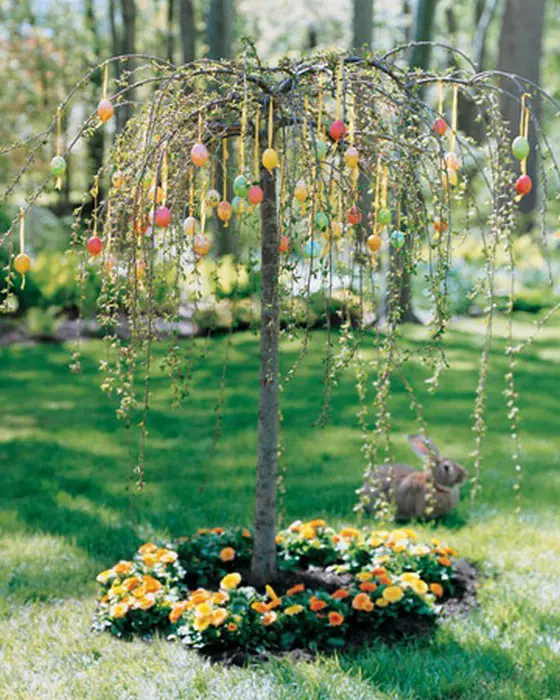17 Best Plants That Repel Wasps And Bees
While it’s well-known that bees play a vital role in pollination and plant biodiversity, their ability to sting still raises concerns for gardeners. And let’s not forget about wasps – their brutal stingers can even be fatal if not treated promptly. Since exterminating bees isn’t acceptable due to their importance in pollination, and eliminating wasps is no easy feat, it’s crucial to explore plants that naturally repel these unwanted visitors.
In this article, we’ll delve into 17 plants that effectively deter wasps and bees, providing a comprehensive solution for keeping your garden and landscape pest-free.
How do you keep wasps and bees away from plants?
When it comes to keeping bees and wasps at bay, insect repellent plants can be a valuable ally. To harness their power effectively, consider the following tips for choosing the right plants to repel these stinging insects from your garden.
Take advantage of overpowering smells that bees and wasps detest. This natural deterrent can be a game-changer in keeping them away.
Plants with sharp spines are another effective way to keep bees and wasps at arm’s length, as they tend to dislike the texture and discomfort these plants provide.
Another clever tactic is to use fake, flashy flowers that can confuse stinging insects, making it difficult for them to zero in on your garden. This approach may not be foolproof, but it can certainly give you an edge.
Interestingly, bees and wasps are colorblind to specific colors, so knowing which hues they lack sensitivity to can be a valuable asset in your battle against these pests. By incorporating plants that exploit this weakness into your garden design, you can create a more bee- and wasp-free environment.
Finally, consider using plants that lure bees and wasps with their color but ultimately trap or consume them.
These cleverly designed plants can be a powerful tool in managing the populations of these insects around your garden.
17 plants that repel wasps and bees
To naturally deter wasps and bees without relying on chemical-based solutions, consider cultivating these 17 plant alternatives. Many of these options are common and require minimal upkeep. Let’s dive right in:
Cucumber
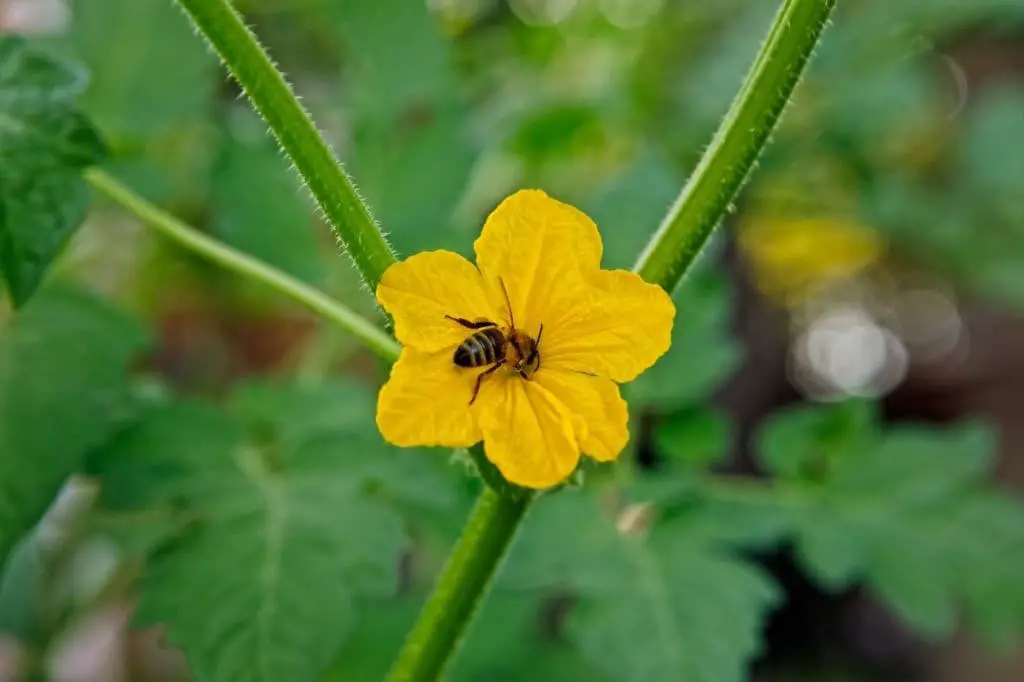
When it comes to insect repellent plants, cucumbers are often a surprising standout. Wasps and bees tend to abhor the acidity of cucumber flesh, which can be a major turnoff for these stinging insects. Additionally, the bitter taste of cucumber is another factor that deters them from getting too close. To harness this natural repellency, you can plant cucumbers in your garden, providing a steady supply of fruit while keeping unwanted visitors at bay.
Alternatively, shredding cucumber peels and distributing them around the garden or near bee and wasp nests can also be an effective way to keep these pests from bothering you.
Basil
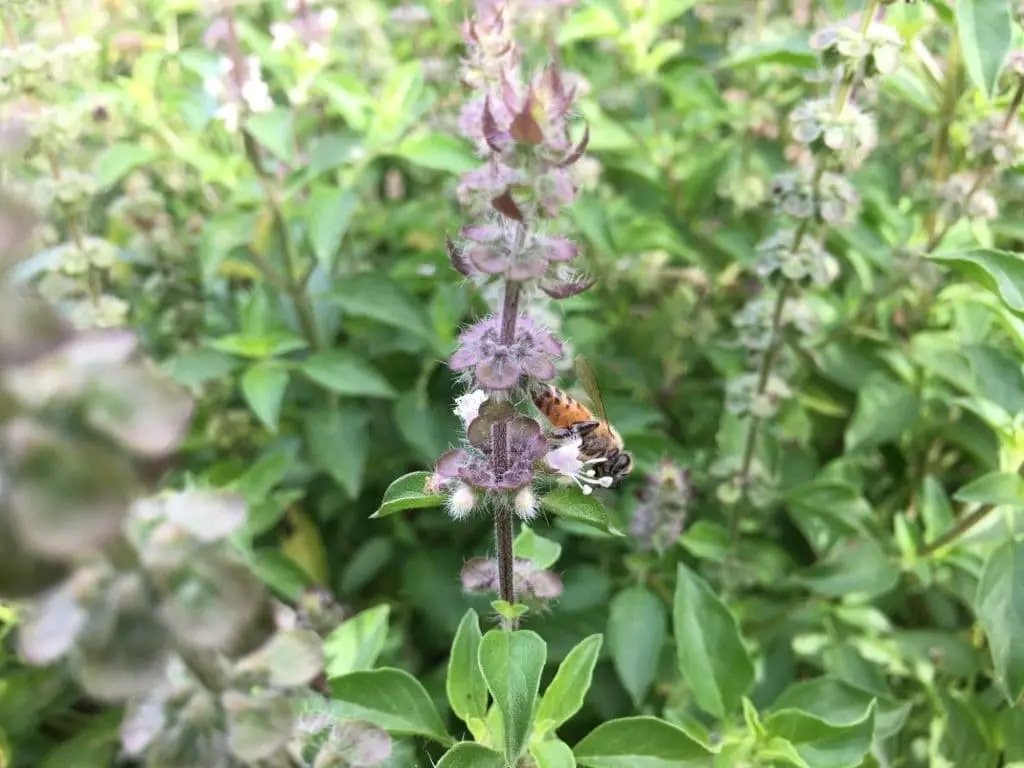
The versatility of basil is undeniable – it’s a staple in many pasta dishes and salads, but its benefits extend far beyond the kitchen. Basil has natural pest-repelling properties that make it an excellent addition to any garden. Its potent aroma is particularly unappealing to roaches, mites, bees, and wasps, effectively keeping these unwanted visitors at bay. In fact, having basil in your garden can be a bee’s worst nightmare – literally!
With its low maintenance requirements and love of sunshine, basil is an easy and effective way to create a pest-free landscape.
Geraniums
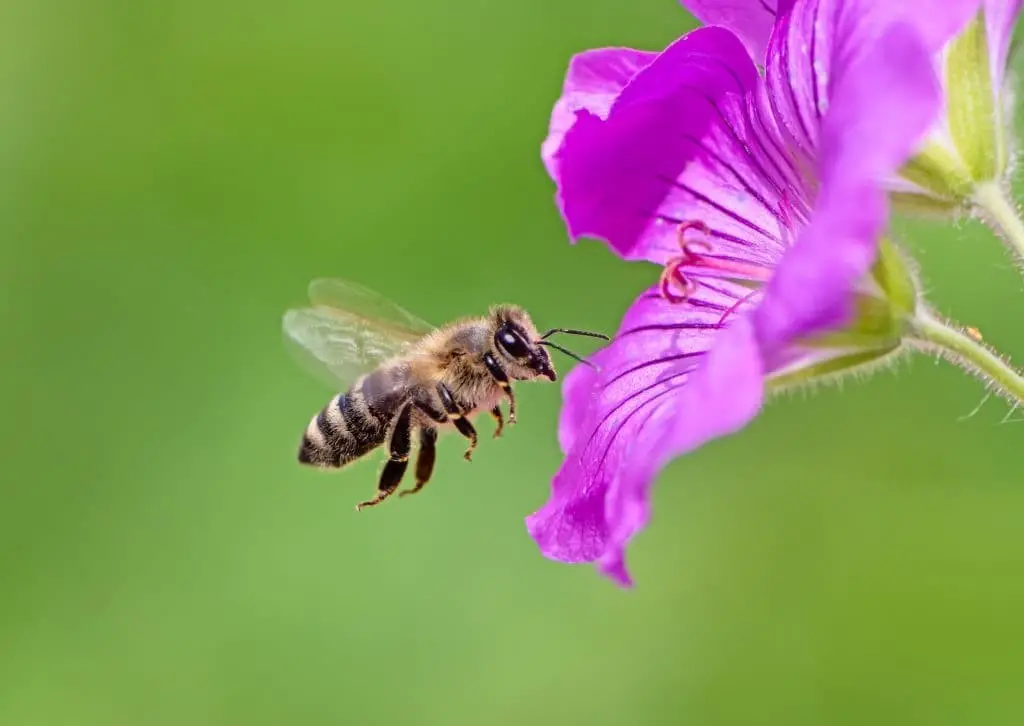
Red geraniums, specifically, are the ones that keep bees at bay due to two distinct reasons. Firstly, since bees are colorblind to red, they’re naturally deterred by these vibrant flowers. Secondly, geraniums produce negligible amounts of pollen, making them unappealing to bees.
Despite their reputation as bee repellents, geraniums boast striking colors and versatility, making them an excellent choice for adding borders and accents to your garden, where they can thrive without attracting unwanted visitors.
Pitcher plants
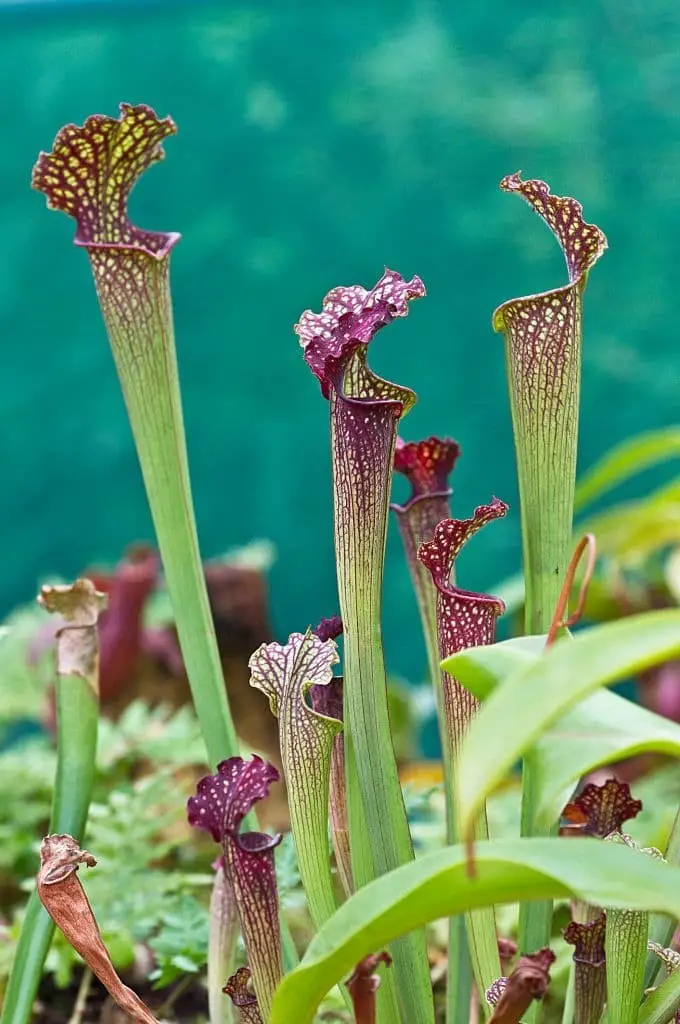
The pitcher plant’s unique ability to trap insects makes it a fascinating specimen in the world of botany. Instead of simply repelling bees and wasps, this carnivorous plant lures them in with its glossy appearance and delicate colors, only to ‘digest’ them through a process that involves drowning. The insects are initially attracted by the plant’s visual cues before being tricked into falling down a slippery surface, ultimately succumbing to their watery demise.
Due to the specific growing conditions required for this plant to thrive, it may not be the most practical choice for gardeners. However, its intriguing behavior makes it an intriguing subject of study.
Mint
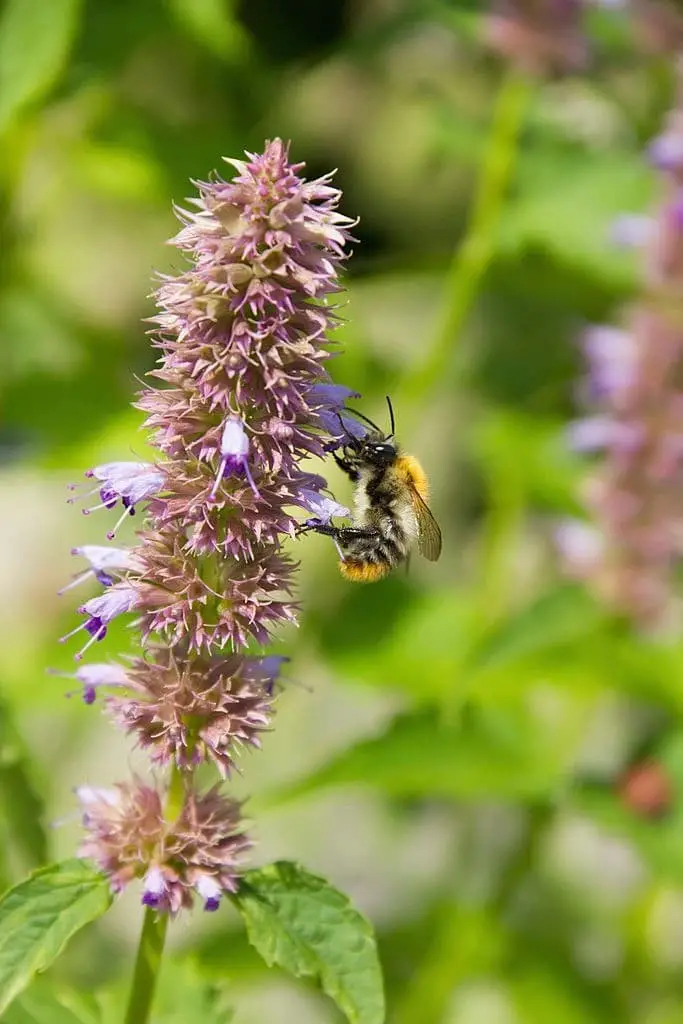
This versatile herb is often overlooked as a simple garnish, but its potent aroma also makes it a natural deterrent for wasps and other unwanted insects. The overpowering scent is too much for these pests to tolerate, effectively keeping them at bay. By incorporating this herb into your outdoor space or indoor decor, you can create a peaceful atmosphere that’s free from pesky wasp visitors.
Simply plant the herbs in containers and place them strategically around the home or garden bed, allowing their oils to waft through the air and keep unwanted insects away.
Trumpet flowers
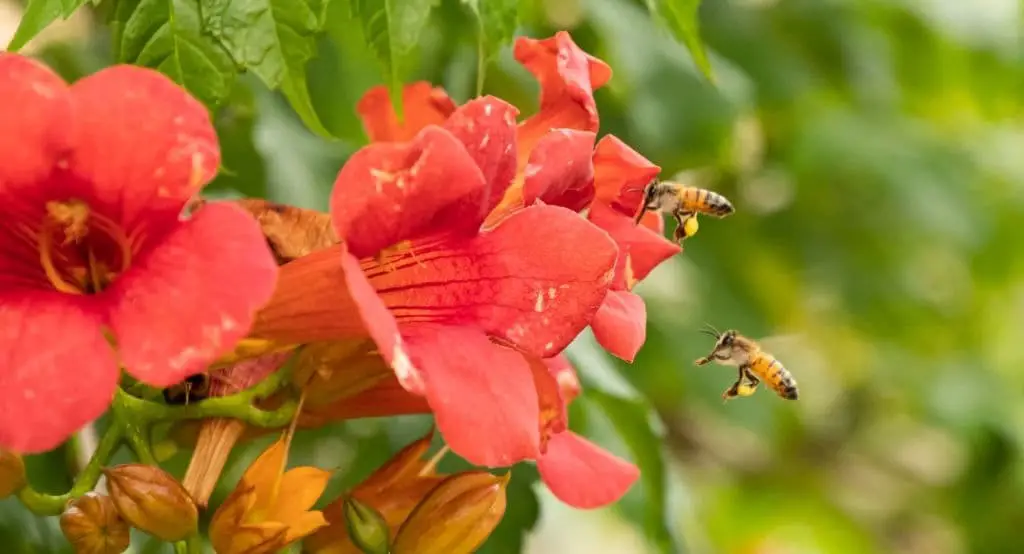
Trumpet flowers have evolved to deter bees and other insects with their unique shape, dull colors, and pungent smell. This peculiar combination makes it difficult for bees to extract nectar from the plant, rendering it an effective natural repellent. The same characteristics that repel bees also discourage wasps and other pests from visiting the trumpet flowers.
If you’re looking to add some of these insect-repelling beauties to your garden, consider cultivating amaryllis, honeysuckle, buttercups, and narcissus, all of which are known for their ability to keep unwanted visitors at bay.
Wormwood
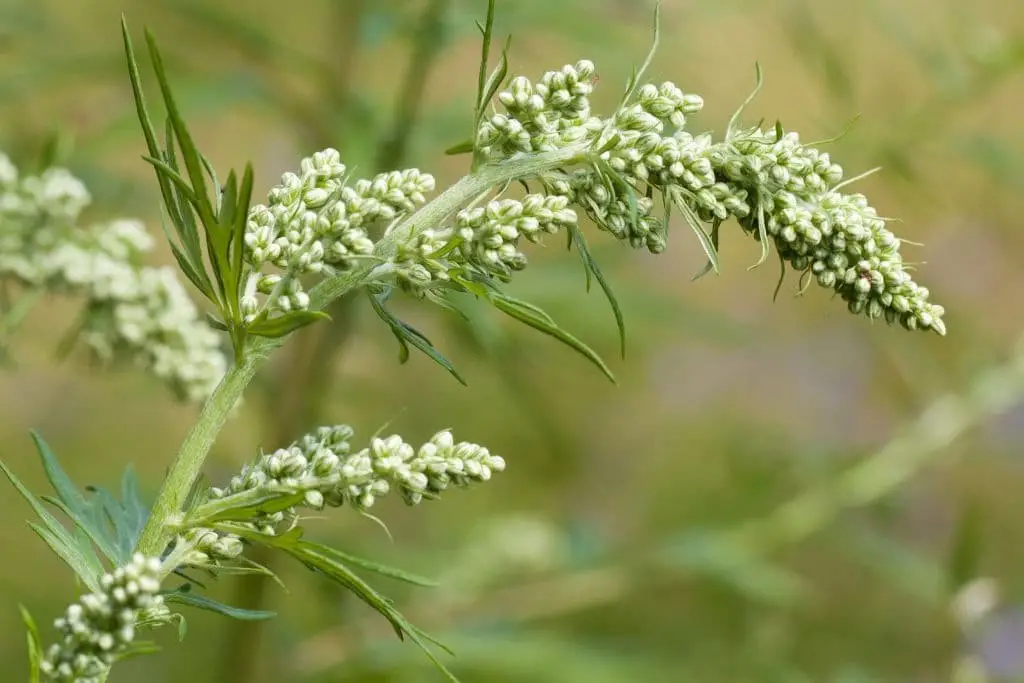
Wormwood, also known by its botanical name Artemisia, is an often-underappreciated yet effective pest and insect repellent. To utilize its natural deterrent properties, the leaves of this plant are typically harvested, dried, and then hung in bundles around the home to ward off wasps and bees. This traditional method has evolved over time, with essential oils now being extracted from wormwood for use in aromatherapy and other applications.
Furthermore, wormwood can also be cultivated as a border plant, serving as a natural barrier against unwanted pests like wasps and bees.
Lemongrass
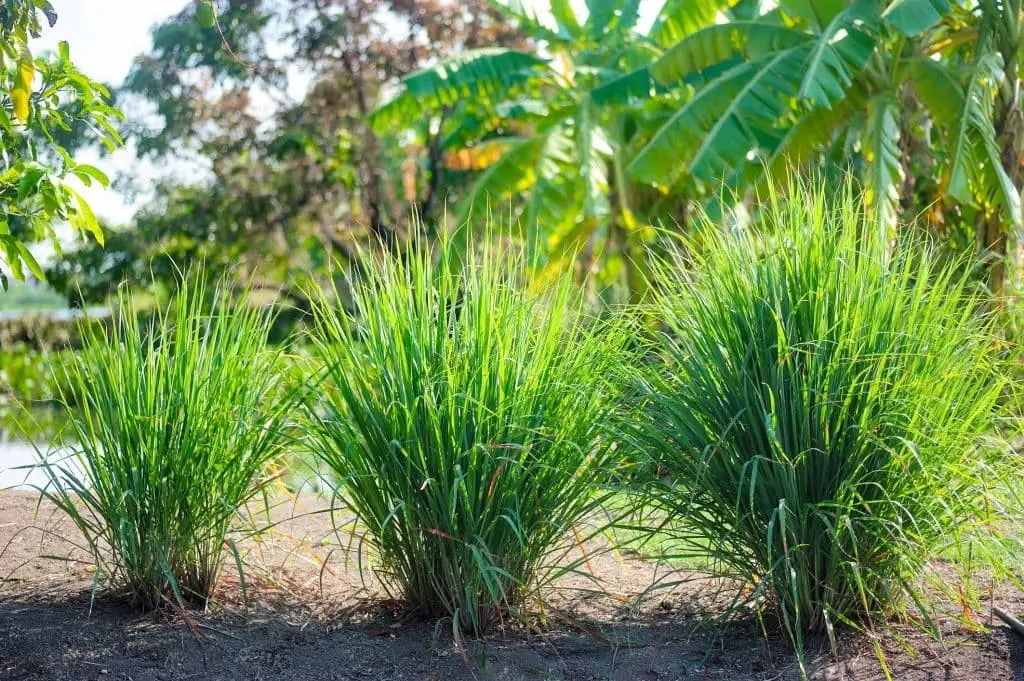
In a fascinating phenomenon, wasps and lemongrass exhibit an innate aversion towards each other. This is largely attributed to the potent citronella compounds present in lemongrass, which overwhelm most insects, including mosquitoes, bees, and wasps with its pungent citrus aroma. Notably, this plant’s ability to thrive on neglect makes it a low-maintenance option for cultivation.
Its versatility also allows it to be used as a container plant, placing it perfectly in window sills or other areas of the home where insect presence is prevalent.
Eucalyptus

Eucalyptus, a cousin of lemongrass and other citrus-scented plants, boasts an impressive arsenal against insects. Its potent aroma repels a diverse range of pests, including mosquitoes, fleas, mites, bees, and wasps. This natural repellent can be grown as trees or cultivated in containers, allowing for versatility in its application. Moreover, the leaves of eucalyptus can be processed to produce essential oils, further expanding its uses.
Its effectiveness against these insects makes it a valuable addition to any insect-repelling strategy.
Pennyroyal
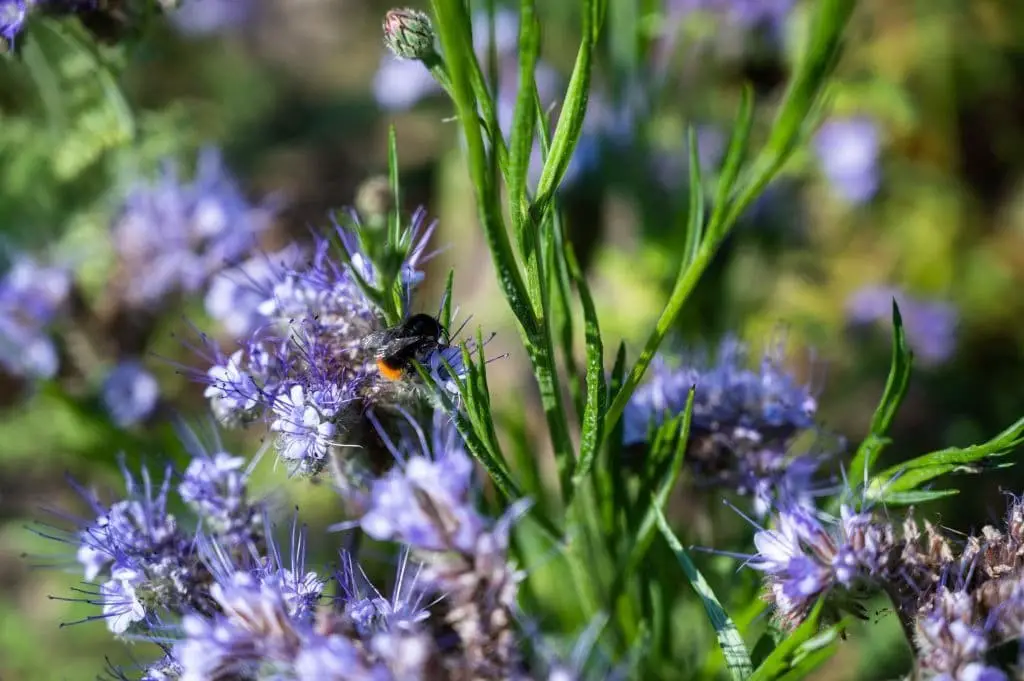
While often overlooked, this compact plant is a valuable asset when it comes to bee repellents. Its understated nature makes it an ideal choice for underplanting in various landscapes or showcasing as a potted plant in the home. The secret to its bee-repellent properties lies in its subtle color palette and potent aroma, which deters bees from swarming around it. Additionally, this plant thrives in partial sun and shade conditions, and requires well-draining soils to reach its full potential.
Cloves
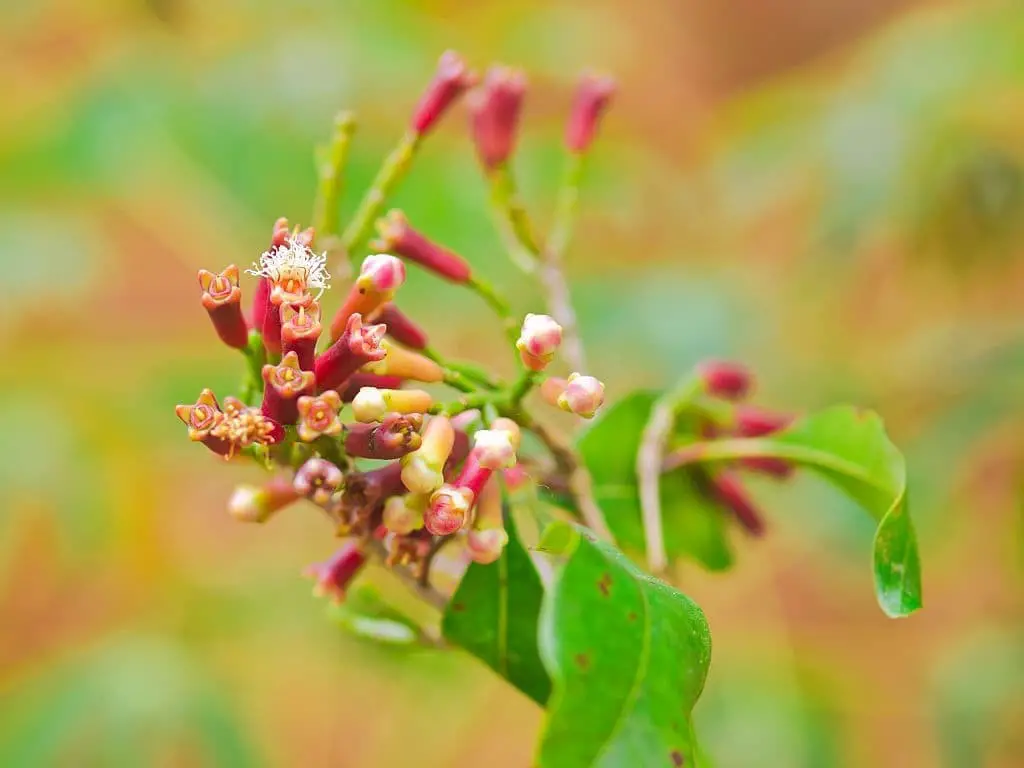
This fragrant herb boasts a unique blend of spicy and sweet notes that initially attracts bees and wasps. However, its potent aroma kicks in when they get closer, effectively repelling these unwanted visitors. As a natural insect deterrent, it can be planted throughout your yard. For an even more effective solution, combine it with other natural repellents like lime, eucalyptus, or cinnamon.
You can mix it with essential oils to create a potent potpourri for indoor use or shred the herbs and spread them around your yard for added protection.
Marigolds

Citronella grass is a well-known natural insect repellent that effectively deters a wide range of insects, including mosquitoes, mites, fleas, bees, and wasps. Its potent citronella aroma overwhelms the senses of these pests, rendering them incapable of detecting its presence. While its vibrant colors do attract certain bee species, such as honeybees, which are drawn to it for nectar purposes, this versatile plant is also a stunning addition to any landscape.
Moreover, it’s incredibly easy to establish and maintain, thriving even in the absence of regular care.
Rue plant
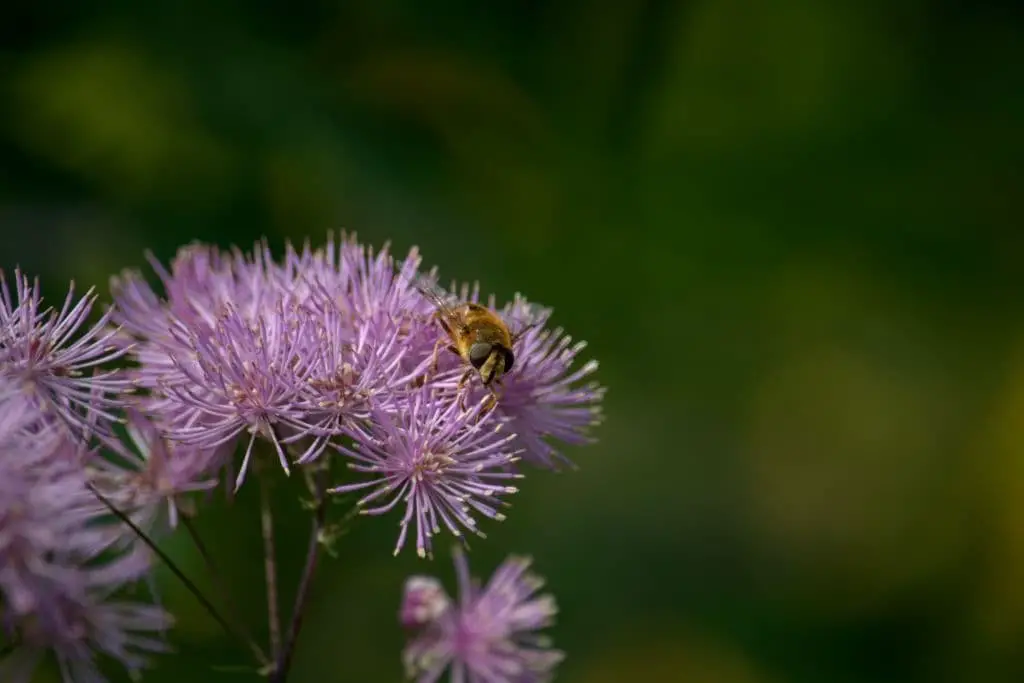
Rue, an often overlooked herb, boasts a unique combination of properties that make it an effective insect repellent. Its leaves possess a bitter taste, which deters bees, wasps, and other insects from approaching the plant. Additionally, its oil-coated glands emit a pungent aroma that further discourages these pests from coming near. Interestingly, rue’s small, inconspicuous flowers fail to attract bees, making it an ideal natural barrier against unwanted insect visitors.
Not only does rue repel bees and wasps, but it also proves unwelcome to fleas and fruit flies, making it a valuable addition to any garden or outdoor space seeking to minimize insect encounters.
Lemon balm
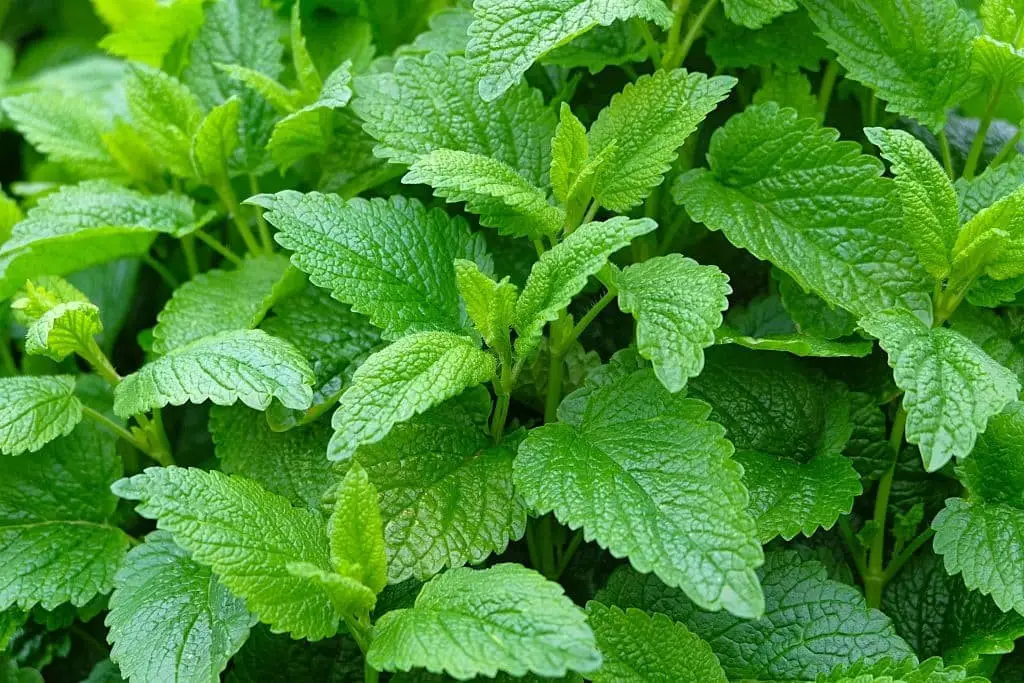
This vibrant herb, renowned for its zesty aroma and versatile uses, makes an excellent addition to your outdoor space. Not only can it elevate the flavor of cooked dishes, salads, and even cocktails, but its potent scent also provides a natural defense against unwanted pests like wasps, hornets, mosquitoes, ticks, fleas, and other stinging insects. Consider placing potted plants throughout your garden or incorporating them into your yard’s design for maximum benefit.
Floss flower
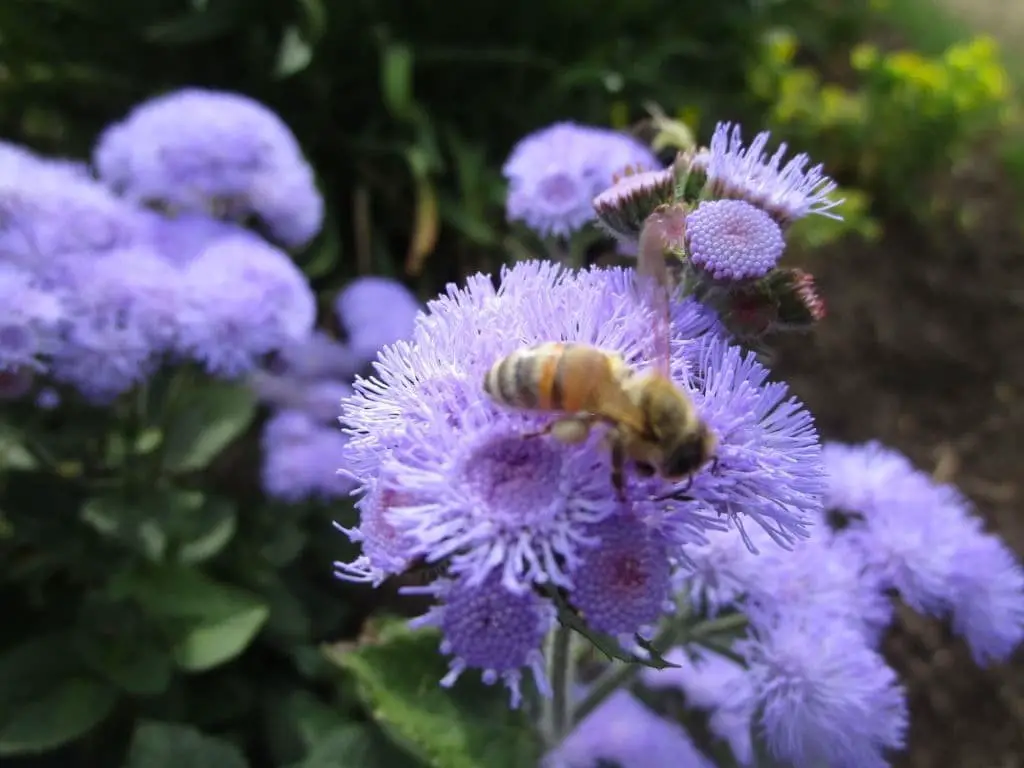
This striking, annual bloomer may seem like a magnet for bees, lured in by its sweet nectar. However, the primary benefit to these busy pollinators is short-lived due to the plant’s potent chemical defense. Coumarin, a natural compound responsible for the strong scent, not only repels pesky mosquitoes and wasps but also deters other insects and pests from approaching. As a result, bees are forced to vacate the area after a brief visit, making this plant an unlikely haven for swarming insects.
Red roses
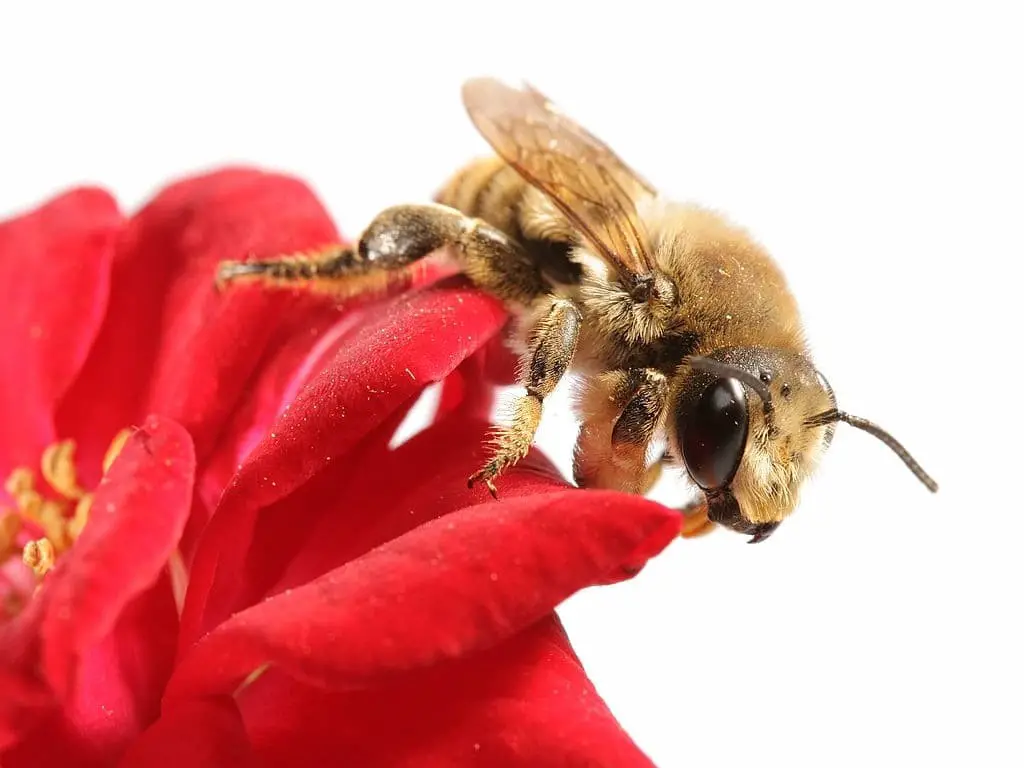
When it comes to repelling unwanted visitors in your garden, understanding bee behavior can be a valuable asset. As we’ve previously discussed, bees are actually colorblind to red, which means they tend to avoid red roses and other dark-hued blooms. If you’re looking to keep bees at bay, incorporating red roses into your garden design may be an effective strategy.
On the other hand, if it’s wasps and other insects that are causing issues, highly scented roses might be a more effective deterrent, as these pests are often drawn to strong fragrances.
FAQs
What smells do wasps hate?
Wasps have a unique aversion to certain smells, which often serve as a repellent for them. One common characteristic of many plants wasps dislike is overpowering or strong scents, including aromatic, minty, and citrusy notes. In addition to these, other odors that wasps tend to detest include vinegar, cinnamon, peppermint, and soap scents. These smells often play a crucial role in deterring these insects from approaching or interacting with certain plants.
What plants attract bees and wasps?
When it comes to creating a bee- and wasp-friendly yard, understanding which plants attract these pollinators is crucial. Here’s a rundown of the most attractive plants for bees and wasps: For bees, borage, with its bright flowers and traditional medicinal properties, is a top draw. Rosemary, aromatic and medicinal, also draws in these busy insects with its flowers that are bee-approved. Catnip, meanwhile, is a triple threat, attracting not just bees and wasps but also our feline friends.
Flowering currant, during spring, is a go-to for bees, butterflies, birds, and other pollinators. Pussy willows, with their generous pollen offerings, are naturally attractive to bees. Crocus, with its subtle blue and purple flowers, is another bee favorite, as wasps can also tolerate the lack of strong scent. Sunflowers, aside from their bright flowers and sweet smell, contain plenty of pollen, making them a hit among bees, butterflies, and birds.
Late-blooming echinacea, or coneflowers, are loved by both bees and other insects, while hyacinth’s large, colorful blooms make it a favorite among pollinators. Lilacs, with their delicate petals and rich nectar, are a staple in many bee and bird habitats. As for wasps, some of their top picks include sweet fennel, queen Anne’s lace (wild carrot), spearmint, and yarrow.
Does peppermint keep wasps away?
With the versatility of peppermint oil, you can employ various methods to deter wasps from your yard, home, or even create a natural repellent. To utilize this solution, start by preparing a spray bottle and adding a few drops of peppermint oil. Next, add a small amount of dish soap to the mixture before filling the remainder with water. Give the solution a good shake to ensure everything is well combined.
Once prepared, you can use this solution to spray directly onto wasp nests if you’ve located them, or around entry points like window sills, holes, and crevices.
What yard maintenance steps should be done to keep wasps away?
To keep your yard and garden safe from unwanted stinging insects like bees and wasps, it’s essential to implement effective maintenance strategies. Here are some practical tips to help you achieve a bee- and wasp-free outdoor space.
Firstly, plan your landscape wisely by positioning planters and garden boxes away from the house and towards the periphery of your estate. This will prevent these flowering plants from attracting unwanted visitors.
Additionally, consider placing them near areas like patios or poolside where they can thrive without drawing in stinging insects.
Secondly, employ regular weed control measures to eliminate any unwanted plants that may be serving as a haven for wasps and bees. Pulling out weeds on a regular basis will help prevent these pests from finding shelter in your garden.
Thirdly, make sure to eliminate any standing water around your estate, including ponds or water puddles.
Like mosquitoes, wasps are attracted to still water, so it’s crucial to keep your outdoor space free of this type of habitat.
Finally, be mindful of sticky food residues and crumbs that can attract bees and other insects inside your home or around areas where leftovers are consumed. By being proactive about cleaning up spills and wiping down surfaces, you can discourage these pests from making themselves at home in your yard.
Ultimately, a comprehensive pest control strategy is essential for keeping your garden free of unwanted visitors. Consider incorporating natural predators like bird species that feed on wasps and other harmful insects to keep your outdoor space safe and insect-free.
What should I do to keep ground bees away from the home?
To effectively keep ground bees away from your home, consider these unconventional methods aside from the plants mentioned earlier. While commercial bee sprays can be an effective way to eliminate ground bees by targeting their central nervous system and leading to paralysis and death, there are also more natural alternatives available. For instance, insecticidal powder can be used directly on their nests, suffocating and paralyzing them before ultimately killing them.
Additionally, bee zappers can be installed near entry points to deter bees from entering your home without emitting any harmful substances. These devices work by emitting electromagnetic rays that electrocute insects as they attempt to enter. If you prefer a more natural approach, consider using a vinegar solution or mothballs to repel and kill ground bees.
The strong smell of the vinegar solution can attack the respiratory system of bees, causing suffocation and death, while the vapor from mothballs is unattractive to bees, driving them out of your home. To catch any stray bees, you can install simple bee traps using sticky surfaces or small jugs with water and a bee hole. You can also add a vinegar or soap solution to the water to kill trapped bees.
Alternatively, you can use cinnamon powder to force bees to relocate by pouring it around their beehives. Finally, if you notice small patches of ground indicating the presence of ground bees, consider using sprinklers to drown them and force them to relocate elsewhere.
Do wasps kill bees?
Interestingly, yellow jacket wasps and hornets occupy a unique position in the ecosystem as apex predators of bees. What’s more, certain species of these wasps have evolved to target honeybees specifically, periodically raiding their beehives. This phenomenon has significant implications for honey bee growers, who must remain vigilant about wasp activity throughout the seasons.
The presence of these wasps can actually hinder honey production, making it essential for apiarists to understand and adapt to the wasp’s life cycle.
Why are wasps dangerous?
Wasps are notoriously aggressive when it comes to defending their nests, and any sudden movements near their habitats can spark a violent reaction. They’ll attack without hesitation, targeting people and animals alike. This territorial behavior is particularly concerning because wasps don’t succumb to death after stinging like bees do. Instead, they can deliver multiple painful stings, increasing the risk of severe reactions.
When it comes to anaphylactic shock, every second counts.
If you suspect a wasp sting has triggered an allergic reaction or if you’re experiencing symptoms, seek immediate medical attention – the consequences can be deadly. While adult humans may be able to withstand up to 1000 stings, children are disproportionately affected, with as few as 500 stings capable of proving fatal.
Are honey bees dangerous?
While honeybees are often perceived as harmless, they can also inflict painful stings and potentially serious consequences. A single honeybee sting can cause raised welts and significant discomfort, all thanks to the venom delivered by the bee’s barbed stinger. While most individuals can recover from a bee sting without issue, those with allergies may be at risk of experiencing anaphylactic shock, which in severe cases can even be fatal.
Are bees aggressive to humans?
The cyclical nature of bees’ behavior is marked by periods of increased aggression, particularly during the summer and fall seasons. This phenomenon can be attributed to several factors that trigger their defensive instincts.
When a colony loses its queen, it may become more aggressive towards humans as a result. Nectar dearth or an insufficient supply of gathered nectar also contributes to this behavior.
Beehive robbing is often the primary cause of bee aggression, prompting them to become more protective and territorial. The activation of their alarm pheromone due to various reasons, such as rainy weather, winter, or high humidity, can further exacerbate their aggressive nature.
Conclusion
In conclusion, while there are specific plants that deter bees and wasps individually, creating a barrier for both insects simultaneously requires selecting plants that repel both. Fortunately, this list provides numerous options for achieving this goal. As we’ve explored thus far, attracting these stinging pests to your yard necessitates a dual approach: confounding them with color and overpowering them with scent.
Additionally, implementing effective yard maintenance practices is crucial for keeping them at bay and ensuring a peaceful coexistence.



